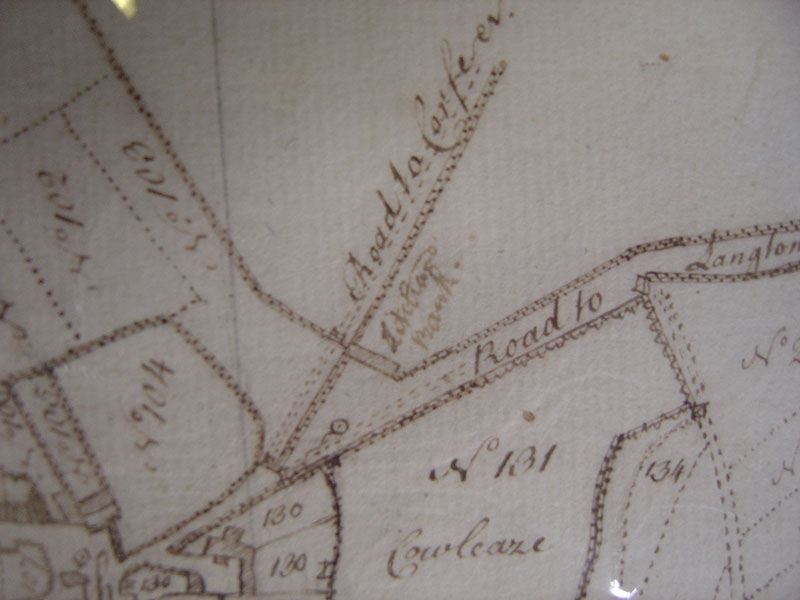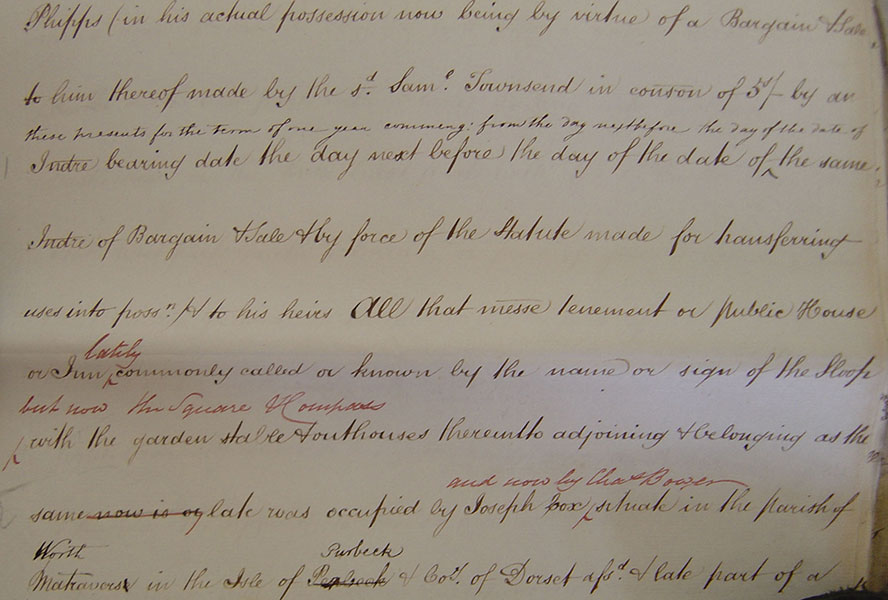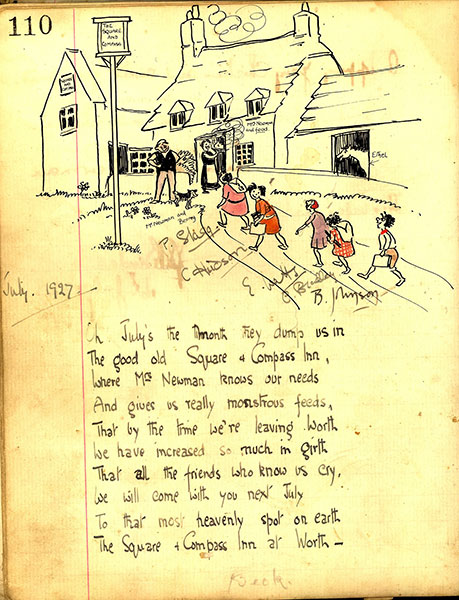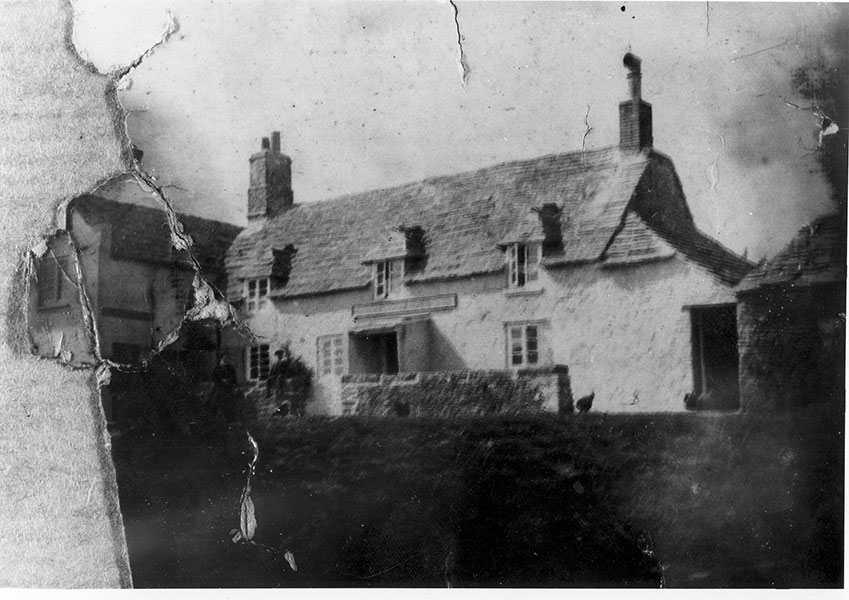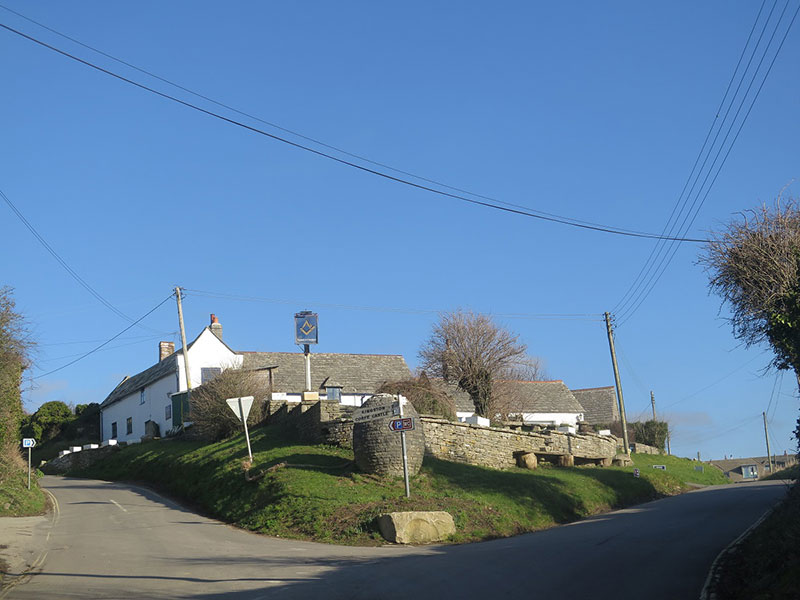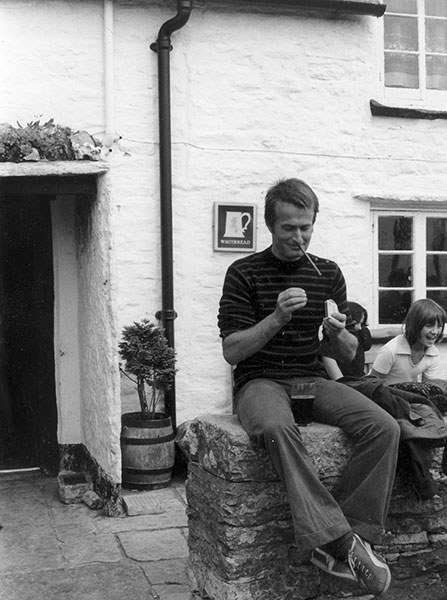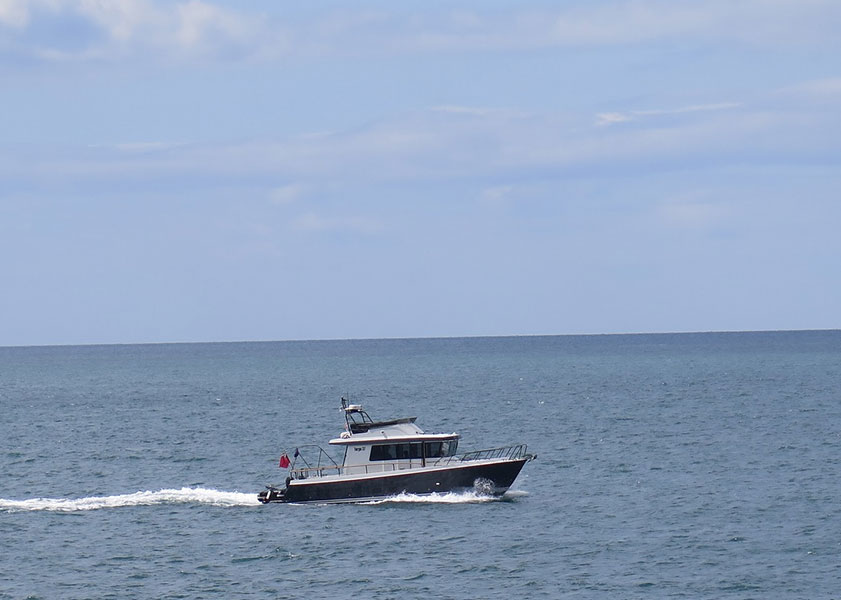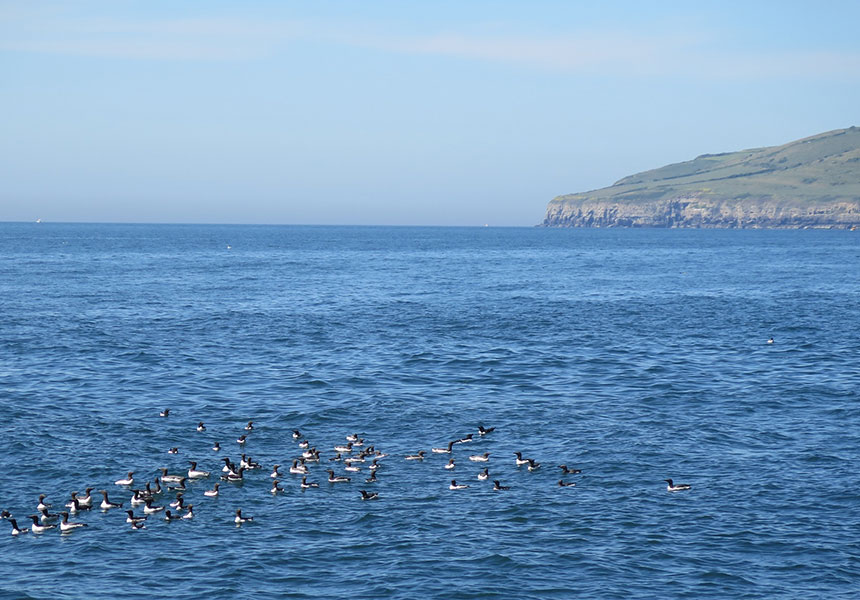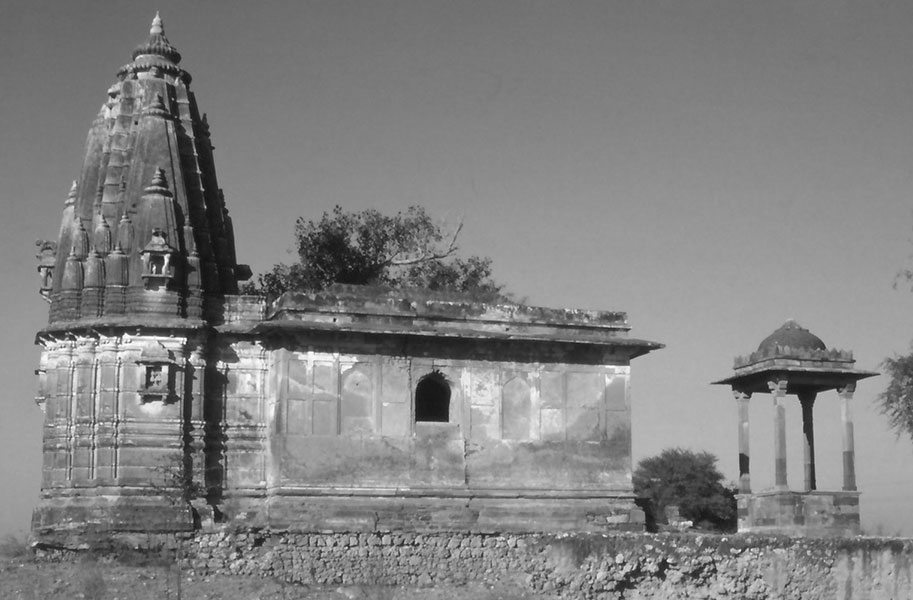95. The Square And Compass
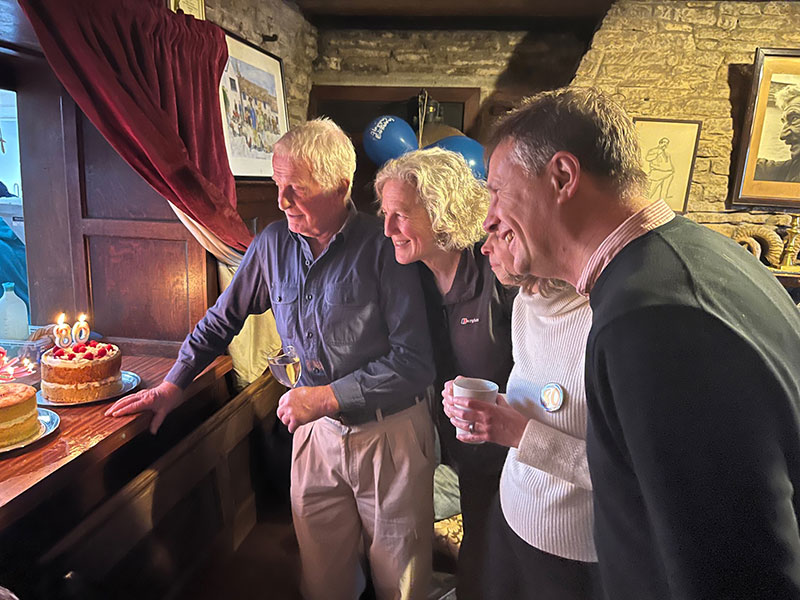
94. The Square And Compass 1
February 6, 2025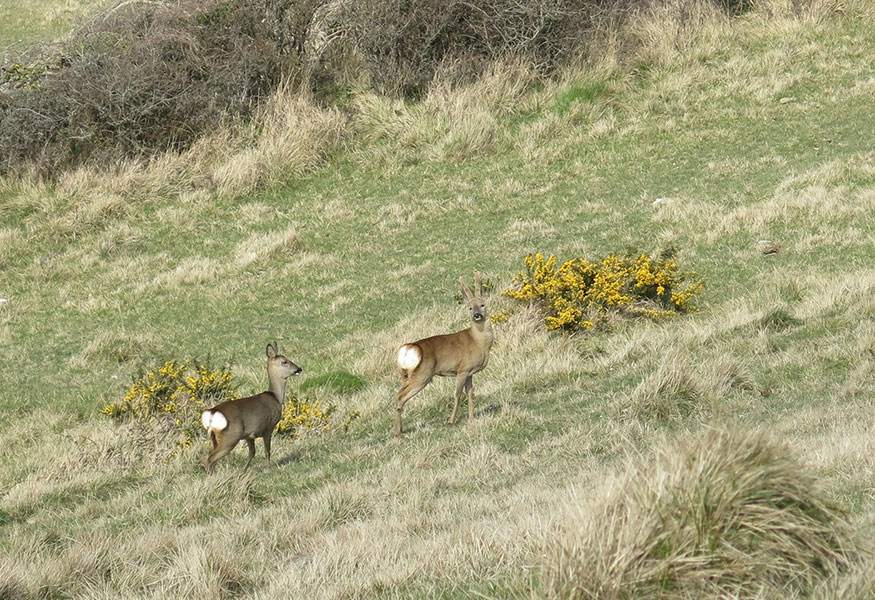
96. Spring Returns
April 5, 2025A s the century, the millennium, shifted, there was talk of celebrating the Newman family’s centenary of taking on the lease of The Square & Compass pub in 1907. Charlie Newman and Jack Daniels, a customer, suggested creating a book to the event. Jack planned a square book reflecting the pub’s Square and Compass sign. Charlie asked whether I would research and write the text. I agreed and spent several weeks at The History Centre, in Dorchester, district town of my home county, Dorset.
No one seemed to know much about the age of the pub or its story. When I started drinking at the Square, in 1961, Eileen Newman, then the landlady, claimed it dated from the 13th century. Who had suggested that, I don’t know. Certainly, no one amongst the regulars, including me, knew any better and, since we never went to the place in search of such details, that was unlikely to change. But the History Centre is a treasury. Days of poring over old papers yielded very little on 13th century Worth and that little was in Latin in illegible script. My Latin has expanded very little from the Catholic liturgy gathered by a lively altar boy already querying the necessity of communing with a deity in an incomprehensible tongue. I knew the system. When the priest said ‘Mumbo Jumbo Wumbo’ & I must reply ‘Wambo Wimbo Pimbo.’ God never struck me down, so presumably I got it right, or perhaps his Latin was also weak. Part of growing up was to learn that, across the world, incomprehensible defunct languages seem to be preferred by gods.
Eileen had not been in search of a historic record, merely a hopeful date, pulled from the ether, to satisfy the frequent questions of the punters in her ancient inn. Its accuracy immaterial, having no effect on the quality of the beer. But, in the event, Latin research never proved necessary. It was soon apparent that the building, like all the oldest domestic structures in the village, was actually a mid-18th century creation.
When I was commissioned to survey Indian domestic architecture in the 1980s, Sir Bernard Feilden, a prominent British architect, had shown me how it was done. Throughout the project his quote haunted me: “Let the building speak to you.” So the first thing was to examine the building carefully. It consisted of a pair of old cottages with a later wing running at right angles to its western end, and was built on a spur of land overlooking Worth village. The Purbeck historian, Reg Saville, gave it a definite date, 1752, claiming it was built as an inn. He had the ability I lacked to date domestic architecture by Its features. As for the source for 1752, he was uncertain. That date can’t be far out, but the detail that it was built as an inn proved unlikely. In the 1770s, , unlike the rest of Worth village, it fell in Downshay Farm. The rest of the village had been bought in 1771 by John Calcraft, who had commissioned an accurate map. There was no Inn marked on it. In September 1771 Calcraft gave his agent instructions to create one in the sector he already owned, then promptly died the following August. His estate passed to the eldest of four children. In the chaos that followed, the scheme for an inn was soon forgotten.
The building that was to become the Inn is clearly marked on Donne’s map as Litchard Bank, situated in the V formed by the junction of roads to Swanage and Corfe. But it was not in the part of Worth which Calcraft already possessed. The frontier between the two follows the wall on which I am sitting in the photo.
That double cottage may have been held by a man called John Toop ‘and another’, described as holding a pair of cottages in Downshay Farm in 1771 at a rent of £5 a year. Downshay Farm was owned by John Pike, descendant of the Dolling family who had held Worth since Elizabethan times. Short of cash, he was keen to sell it. With Calcraft out of the market, Thomas Hyde, a Poole merchant, made an offer and duly bought Downshay Farm in 1776. There is no mention of any inn or public house in the farm’s grounds at the time of the sale, so it didn’t yet exist.
John Toop died in 1786. The following year one Joseph Cox married a Worth girl and he was paying £5 a year for a cottage at Downshay Farm. Thomas Hyde already had interests in a brewery and owned several public houses in nearby Wareham. Another on the edge of Worth village would increase his income, so I guess he applied for a license for that double cottage and installed Cox there as the landlord. No paperwork survives relating to this. But, under the sign of ‘The Sloop’, the pub was born with Joseph Cox as its landlord. A sloop is a light, single-masted sailing vessel. Did Cox have associations with the sea? The drama of life continued. Thomas Hyde, supplying Purbeck clay to Josiah Wedgwood, overreached himself and was unable to fulfil his contract. In 1793, this led to bankruptcy, forcing Hyde to sell Downshay. The farm was divided into lots. Lot 5 was…a “Public House, or Inn, called The Sloop…” occupied by … “Joseph Cox”….at £5 per annum.” So we are presented with a fait accompli – with no fanfare nor date the pub was born. It was bought by Thomas Phippard, a Wareham brewer, as another outlet for his beer. The Calcraft son bought the rest of the farm, finally adding Downshay to his growing Rempstone Estate.
In 1833 the Inn changed hands again when Phippard sold it to another brewer, Samuel Townsend. The bill of this sale has alterations in the same red ink that was used to sign it, changing the pub’s name from ‘The Sloop’ to ‘The Square and Compass’ and names Charles Bower in place of Cox as the current landlord. Bower was by trade a stone-cutter, so squares and compasses were tools of his trade. No one ever sought to change the name again. Landlords came and went and the pub itself changed hands. Townsend sold it to the Panton family of brewers, who traded as ‘H.J.Panton & Co’. One of the Panton brothers married the daughter of the distinguished painter, William Frith, and in 1909, as a widow, she published a book ‘Fresh Leaves and Green Pastures’ on her Victorian life in Purbeck. This caused great scandal, since Captain Marston, who had inherited Rempstone Estate, claimed she had libelled him. His ground seems to have been very frail, but his position as ‘gentry’ trumped hers as ‘trade’ so justice had little bearing on the result. Her book, which is an interesting read, was duly suppressed and pulped. Luckily, it has been reprinted.
Meanwhile, the pub passed to the Faber brothers, who amalgamated with other brewers as ‘Thomas Strong & Co’ and it was under that banner that it entered the 20th century. In 1907 Charlie Newman obtained the license as landlord. It was he who set it on the path to present prosperity, while his wife, Florence, cooked and cleaned, together encouraging all manner of young folk to join his clientele. In the 1920s and ‘30s it attracted major writers, artists and performers, who chose Worth as a summer watering hole. He passed it to his daughter, Eileen, in 1952, who ran it when I first darkened its doors. She was helped and hindered by Frank Honour, who had arrived in Worth from a wrecked ship. Her nephew and his wife, Raymond & Stella Newman took it over in 1973 and another Charlie, with his partner, Sarah, took over in 1993. He bought the pub from Whitbread, the brewer, so it now the independent owner. For some years after 2003 he passed the management to Kevin Hunt and Jean, until eventually coming back to take over with and without Cath. And there it stands, thriving.

